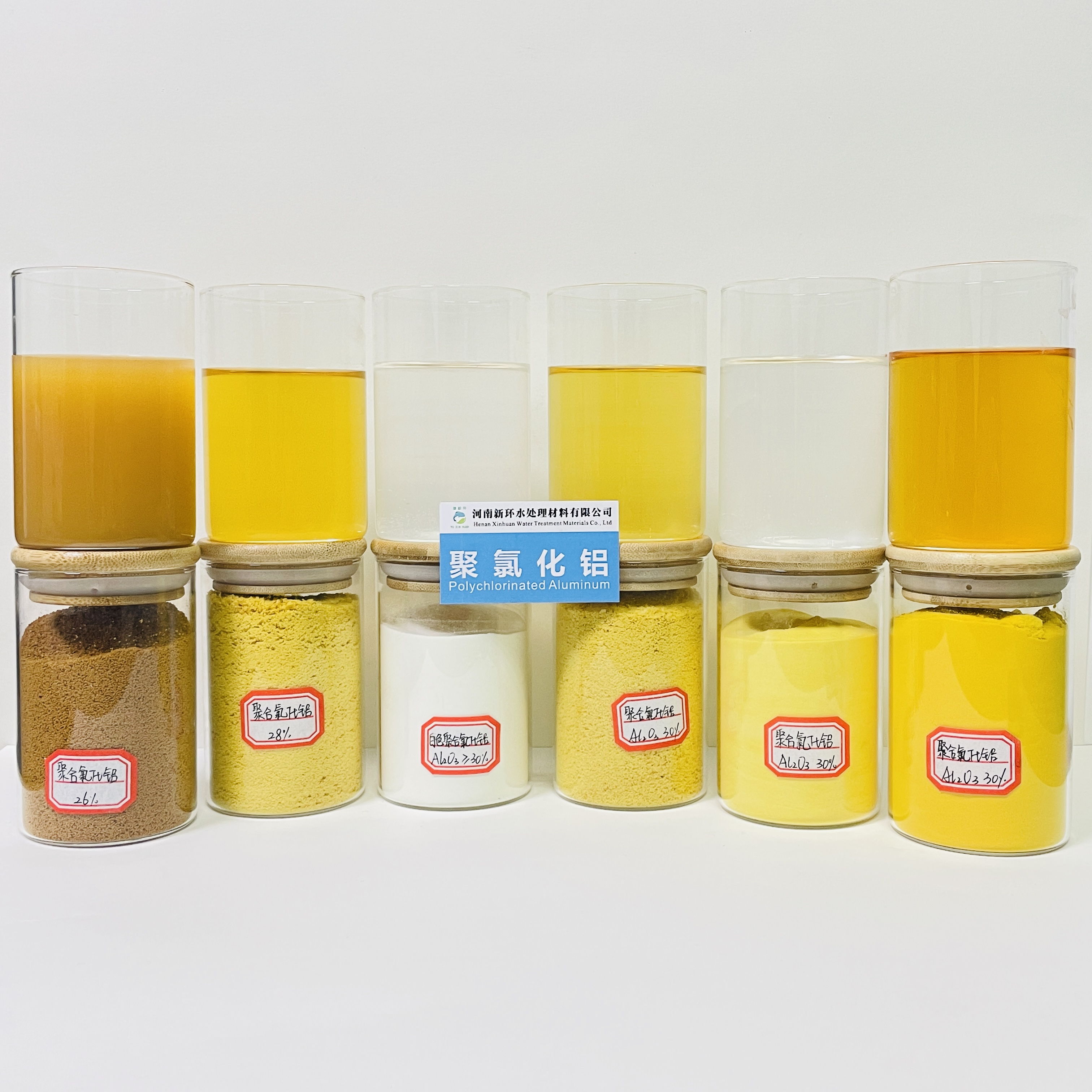Polyaluminum chloride (PAC) is an inorganic substance, a new water purification material and inorganic polymer coagulant, which is called polyaluminum for short. It is a water-soluble inorganic polymer between AlCl3 and Al (OH) 3. The general chemical formula is [Al2 (OH) nCl6-n] m, where m represents the degree of polymerization and n represents the degree of neutrality of PAC products. N=1~5 is a highly charged polymeric ring chain with Keggin structure, which has a high degree of electric neutralization and bridging effect on colloids and particles in water, and can strongly remove micro poisons and heavy metal ions, with stable properties. The inspection method can be in accordance with the national standard GB 15892-2003. Due to the bridging effect of hydroxide ions and the polymerization of multivalent anions, the polyaluminum chloride produced is an inorganic macromolecular water treatment agent with large relative molecular weight and high charge.

Concentration ratio method
When the solid polyaluminum chloride is diluted into liquid, first of all, according to the raw water situation, make a small test to obtain the optimal dosage before use. When polyaluminum chloride is used in production, it can be mixed and dissolved according to the mass ratio of polyaluminum chloride solid: clean water=1:9-1:15. The solution with alumina content less than 1% is easy to hydrolyze, which will reduce the use effect. It is difficult to add uniformly if the concentration is too high. After the reagent is put into use, if there are few alum flowers and large residual turbidity in the sedimentation tank, the dosage is too small; If the alum in the sedimentation tank is large and turned up, the dosage is too large and should be adjusted appropriately.
purpose
1. Urban water supply and drainage purification: river water, reservoir water and groundwater.
2. Industrial water supply purification.
3. Urban sewage treatment.
4. Recycling of useful substances in industrial wastewater and waste residue, promoting the sedimentation of coal powder in coal washing wastewater, and recycling of starch in starch manufacturing industry.
5. Various industrial wastewater treatment: printing and dyeing wastewater, leather wastewater, fluoride wastewater, heavy metal wastewater, oily wastewater, papermaking wastewater, coal washing wastewater, mining wastewater, brewing wastewater, metallurgical wastewater, meat processing wastewater, and wastewater treatment.
6. Paper sizing.
7. Sugar refining.
8. Casting.
9. Wrinkle proof cloth.
Catalyst carrier.
11. Pharmaceutical refining
Quickly set the cement.
Raw materials for cosmetics.
 Concentration ratio method
When the solid polyaluminum chloride is diluted into liquid, first of all, according to the raw water situation, make a small test to obtain the optimal dosage before use. When polyaluminum chloride is used in production, it can be mixed and dissolved according to the mass ratio of polyaluminum chloride solid: clean water=1:9-1:15. The solution with alumina content less than 1% is easy to hydrolyze, which will reduce the use effect. It is difficult to add uniformly if the concentration is too high. After the reagent is put into use, if there are few alum flowers and large residual turbidity in the sedimentation tank, the dosage is too small; If the alum in the sedimentation tank is large and turned up, the dosage is too large and should be adjusted appropriately.
purpose
1. Urban water supply and drainage purification: river water, reservoir water and groundwater.
2. Industrial water supply purification.
3. Urban sewage treatment.
4. Recycling of useful substances in industrial wastewater and waste residue, promoting the sedimentation of coal powder in coal washing wastewater, and recycling of starch in starch manufacturing industry.
5. Various industrial wastewater treatment: printing and dyeing wastewater, leather wastewater, fluoride wastewater, heavy metal wastewater, oily wastewater, papermaking wastewater, coal washing wastewater, mining wastewater, brewing wastewater, metallurgical wastewater, meat processing wastewater, and wastewater treatment.
6. Paper sizing.
7. Sugar refining.
8. Casting.
9. Wrinkle proof cloth.
Catalyst carrier.
11. Pharmaceutical refining
Quickly set the cement.
Raw materials for cosmetics.
Concentration ratio method
When the solid polyaluminum chloride is diluted into liquid, first of all, according to the raw water situation, make a small test to obtain the optimal dosage before use. When polyaluminum chloride is used in production, it can be mixed and dissolved according to the mass ratio of polyaluminum chloride solid: clean water=1:9-1:15. The solution with alumina content less than 1% is easy to hydrolyze, which will reduce the use effect. It is difficult to add uniformly if the concentration is too high. After the reagent is put into use, if there are few alum flowers and large residual turbidity in the sedimentation tank, the dosage is too small; If the alum in the sedimentation tank is large and turned up, the dosage is too large and should be adjusted appropriately.
purpose
1. Urban water supply and drainage purification: river water, reservoir water and groundwater.
2. Industrial water supply purification.
3. Urban sewage treatment.
4. Recycling of useful substances in industrial wastewater and waste residue, promoting the sedimentation of coal powder in coal washing wastewater, and recycling of starch in starch manufacturing industry.
5. Various industrial wastewater treatment: printing and dyeing wastewater, leather wastewater, fluoride wastewater, heavy metal wastewater, oily wastewater, papermaking wastewater, coal washing wastewater, mining wastewater, brewing wastewater, metallurgical wastewater, meat processing wastewater, and wastewater treatment.
6. Paper sizing.
7. Sugar refining.
8. Casting.
9. Wrinkle proof cloth.
Catalyst carrier.
11. Pharmaceutical refining
Quickly set the cement.
Raw materials for cosmetics.